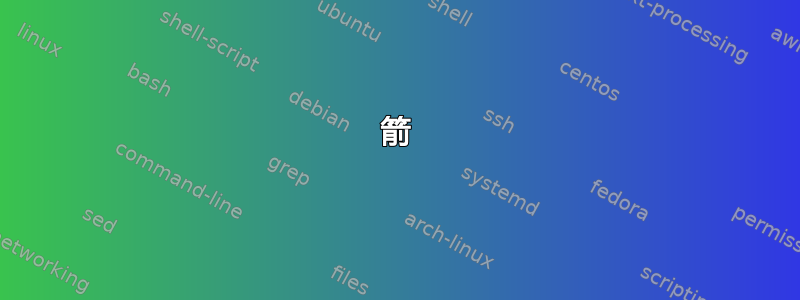
我有以下 MWE
%http://www.texample.net/tikz/examples/probability-tree/
\documentclass{article}
\usepackage[latin1]{inputenc}
\usepackage{tikz}
\usetikzlibrary{trees,arrows}
\begin{document}
\pagestyle{empty}
% Set the overall layout of the tree
\tikzstyle{level 1}=[level distance=3.5cm, sibling distance=3.5cm]
\tikzstyle{level 2}=[level distance=3.5cm, sibling distance=1.2cm]
% Define styles for bags and leafs
\tikzstyle{bag} = [circle,draw]
\tikzstyle{square} = [rectangle,draw]
% The sloped option gives rotated edge labels. Personally
% I find sloped labels a bit difficult to read. Remove the sloped options
% to get horizontal labels.
\begin{tikzpicture}[grow=right, sloped]
\node[square] {25}
child {
node[bag] {25}
child {
node[label=right:
{25}] {}
edge from parent
node[above] {0.2}
node[below] {}
}
child {
node[label=right:
{30}] {}
edge from parent
node[above] {0.6}
node[below] {}
}
child {
node[label=right:
{10}] {}
edge from parent
node[above] {0.2}
node[below] {}
}
edge from parent
node[above] {Buy}
node[below] {abroad}
}
child {
node[bag] {21}
child {
node[label=right:
{40}] {}
edge from parent
node[above] {0.2}
node[below] {}
}
child {
node[label=right:
{20}] {}
edge from parent
node[above] {0.6}
node[below] {}
}
child {
node[label=right:
{5}] {}
edge from parent
node[above] {0.2}
node[below] {}
}
edge from parent
node[above] {Buy}
node[below] {locally}
}
child {
node[bag] {14}
child {
node[label=right:
{55}] {}
edge from parent
node[above] {0.2}
node[below] {}
}
child {
node[label=right:
{10}] {}
edge from parent
node[above] {0.6}
node[below] {}
}
child {
node[label=right:
{-15}] {}
edge from parent
node[above] {0.2}
node[below] {}
}
edge from parent
node[above] {Manufacture}
node[below] {themselves}
};
\end{tikzpicture}
\end{document}
我正在努力添加独一无二箭头(不一定是红色)如下图所示

附加问题是如何使数字 14、21、25(圆圈)和 25(正方形)逐步出现,以便与 beamer 一起使用(即最初有空圆圈和空正方形,然后出现数字)。当然,我可以复制并粘贴树并从第一张幻灯片中删除数字,然后将它们添加到第二张幻灯片中,但是是否有\pause可以与 tikz 一起使用的项目来自动执行此操作?
答案1
箭
对于箭头,我们可以设置every child/.style。如果你只想要一个箭头,例如使用,child[-triangle 90]但是因为子级的子级从其父级继承了这种风格,所以我们要么必须child[-]为每个子级的子级编写,要么我们在外部范围内-应用:every child/.style
\begin{tikzpicture}[
grow=right,
sloped,
every child/.style=-
]
beamer阶梯式节点
您可以使用\uncover<slides>{<number>}内部节点,但请注意,此命令必须被执行两次,因此要使平方祖父出现在幻灯片 2 至 4 和 6 上,请输入:
\node[square] {{\uncover<{2-4,6}>{25}}}
我们\uncover确保节点的内容只是被隐藏(具有相同的维度)而不是被遗漏(\only会做什么)。
没有要求,但还是做了
我最初以为问题的原作者想让孩子以分步法身的方式出现。起初,这似乎不可能做到,直到我发现“beamer 和 TikZ:逐渐揭开树木的面纱“…”
以下解决方案大量借鉴自马克·威尔布罗的“希望”最终解决方案。
用户界面重要部分是 之后的序言的最后一部分\makeatother。
在内部\tikzset我们定义所有我们想要隐藏的样式。
所以,我们使用的每个元素都会得到draw=none,节点的内容将被放入一个盒子中,然后盒子的内容将被\phantom编辑,即隐藏。
(在此示例中tikzpicture也是scaled,以便它适合一张标准beamer幻灯片。)
代码
%http://www.texample.net/tikz/examples/probability-tree/
\documentclass{beamer}
\usepackage[latin1]{inputenc}
\usepackage{tikz,calc}
\usetikzlibrary{trees,arrows}
% Set the overall layout of the tree
\tikzstyle{level 1}=[level distance=3.5cm, sibling distance=3.5cm]
\tikzstyle{level 2}=[level distance=3.5cm, sibling distance=1.2cm]
% Define styles for bags and leafs
\tikzstyle{bag} = [circle,draw]
\tikzstyle{square} = [rectangle,draw]
\makeatletter
\def\tikz@collect@child hild{%
\pgfutil@ifnextchar<{\tikz@collect@child@overlay}%
{\pgfutil@ifnextchar[{\tikz@collect@childA}{\tikz@collect@childA[]}}%
}
\def\tikz@collect@child@overlay<#1>{%
\pgfutil@ifnextchar[{\tikz@collect@child@@overlay{#1}}{\tikz@collect@childA[child
overlay={#1}]}}%}
\def\tikz@collect@child@@overlay#1[{\tikz@collect@childA[child overlay={#1},}
\def\tikzprocessoverlay#1#2#3{%
\def\beamer@doifinframe{#2}%
\def\beamer@doifnotinframe{#3}%
\beamer@masterdecode{#1}%
\beamer@donow%
}
% Extra hackery to allow preactions on different layers.
%
\def\tikz@extra@preaction#1{%
{%
\pgfsys@beginscope%
\setbox\tikz@figbox=\box\voidb@x%
\begingroup\tikzset{#1}\expandafter\endgroup%
\expandafter\def\expandafter\tikz@preaction@layer\expandafter{\tikz@preaction@layer}%
\ifx\tikz@preaction@layer\pgfutil@empty%
\path[#1];% do extra path
\else%
\begin{pgfonlayer}{\tikz@preaction@layer}%
\path[#1];%
\end{pgfonlayer}
\fi%
\pgfsyssoftpath@setcurrentpath\tikz@actions@path% restore
\tikz@restorepathsize%
\pgfsys@endscope%
}%
}
\let\tikz@preaction@layer=\pgfutil@empty
\tikzset{preaction layer/.store in=\tikz@preaction@layer}
\makeatother
\tikzset{%
child overlay/.code={%
\tikzprocessoverlay{#1}{}%
{%
\tikzset{%
edge from parent/.style={draw=none},
every node/.style={
draw=none, fill=none,
execute at begin node={\setbox0=\hbox\bgroup\hskip0pt\let\\=\relax},
execute at end node=\egroup\phantom{\box0}
},%
bag/.style={draw=none}%
}%
}%
}
}
\begin{document}
\pagestyle{empty}
\begin{frame}
% The sloped option gives rotated edge labels. Personally
% I find sloped labels a bit difficult to read. Remove the sloped options
% to get horizontal labels.
\begin{tikzpicture}[scale=.8,
grow=right,
sloped,
every child/.style=-
]
\node[square] {{\uncover<8->{25}}}
child<6->[-triangle 60] {
node[bag] {{\uncover<7->{25}}}
child {
node[label=right:{25}] {}
edge from parent
node[above] {0.2}
node[below] {}
}
child {
node[label=right:{30}] {}
edge from parent
node[above] {0.6}
node[below] {}
}
child {
node[label=right:{10}] {}
edge from parent
node[above] {0.2}
node[below] {}
}
edge from parent
node[above] {Buy}
node[below] {abroad}
}
child<4-> {
node[bag] {{\uncover<5->{21}}}
child {
node[label=right:{40}] {}
edge from parent
node[above] {0.2}
node[below] {}
}
child {
node[label=right:{20}] {}
edge from parent
node[above] {0.6}
node[below] {}
}
child {
node[label=right:{5}] {}
edge from parent
node[above] {0.2}
node[below] {}
}
edge from parent
node[above] {Buy}
node[below] {locally}
}
child<2-> {
node[bag] {{\uncover<3->{14}}}
child {
node[label=right:{55}] {}
edge from parent
node[above] {0.2}
node[below] {}
}
child {
node[label=right:{10}] {}
edge from parent
node[above] {0.6}
node[below] {}
}
child {
node[label={right:$-15$}] {}
edge from parent
node[above] {0.2}
node[below] {}
}
edge from parent
node[above] {Manufacture}
node[below] {themselves}
};
\end{tikzpicture}
\end{frame}
\end{document}
输出此输出是使用选项进行编译的ultra thick。



